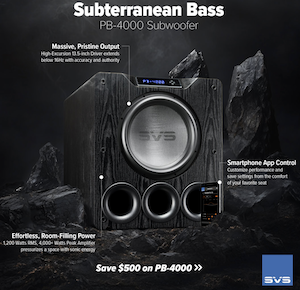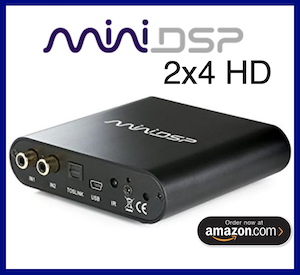Matthew J Poes
AV Addict
Thread Starter
- Joined
- Oct 18, 2017
- Posts
- 1,904
Hi John,
I've been chatting with you privately about this, but figure it may be worth posting publicly, without getting into all the details.
As you know, I'm trying to get an accurate impulse response from the binaural recording. I was originally using your log sine-sweep with timing reference, which I turned into an external wav file, and then recording the binaural measurement of a single speaker in room through Audacity. Importing the Left and Right channels separately into REW and trying to use L/R to create the difference file, representing ITD and ILD. It didn't work, what I got was mostly garbage, and I've been told that it's likely a problem in the FFT. The words used were "There are likely 0's in either the left or right impulse not present in the other that would cause the math to "blow up."
It also turns out the test tone I used doesn't have the properties needed to assess the room as I intended. What I was told to do instead is to use a log swept sine with reverb. Here is a quote:
"To make an IR I record a sine sweep, getting something that looks like a sine sweep, but with reverb added. I then take the sine sweep I used as a source to the loudspeaker, and reverse it in time. Audition will do this. I then convolve the measured sweep with the time-inverted source sweep to get an IR. This is magic. And there is a trick."
If I import the wav files I made using this test tone into REW as I did before, is this essentially what it does? Such that I could export the resulting impulse response and use it as needed to analyze envelopment and spaciousness? I don't have audition nor do I want to spend the money. I can't figure out how to use Audacity to reverse in time the measurement nor convolve the two together, so if REW handles this automatically in creating the IR, then I don't have to keep wasting time trying to figure this out.
I know you said this would happen someday (and not soon), but when you do bring in 2 channel (or hopefully simply multi-channel), it would be amazing if it could automate the measurement of some things like this for dummy like me. There is a lot of amazing academic work out there for measuring spaciousness, envelopment, etc. that go beyond ISO 3382 and have real relevance for small rooms, but its all buried in Mattlab code and AES papers. I'm swimming in this stuff barely able to stay afloat in trying to do this with freely available tools.
I've been chatting with you privately about this, but figure it may be worth posting publicly, without getting into all the details.
As you know, I'm trying to get an accurate impulse response from the binaural recording. I was originally using your log sine-sweep with timing reference, which I turned into an external wav file, and then recording the binaural measurement of a single speaker in room through Audacity. Importing the Left and Right channels separately into REW and trying to use L/R to create the difference file, representing ITD and ILD. It didn't work, what I got was mostly garbage, and I've been told that it's likely a problem in the FFT. The words used were "There are likely 0's in either the left or right impulse not present in the other that would cause the math to "blow up."
It also turns out the test tone I used doesn't have the properties needed to assess the room as I intended. What I was told to do instead is to use a log swept sine with reverb. Here is a quote:
"To make an IR I record a sine sweep, getting something that looks like a sine sweep, but with reverb added. I then take the sine sweep I used as a source to the loudspeaker, and reverse it in time. Audition will do this. I then convolve the measured sweep with the time-inverted source sweep to get an IR. This is magic. And there is a trick."
If I import the wav files I made using this test tone into REW as I did before, is this essentially what it does? Such that I could export the resulting impulse response and use it as needed to analyze envelopment and spaciousness? I don't have audition nor do I want to spend the money. I can't figure out how to use Audacity to reverse in time the measurement nor convolve the two together, so if REW handles this automatically in creating the IR, then I don't have to keep wasting time trying to figure this out.
I know you said this would happen someday (and not soon), but when you do bring in 2 channel (or hopefully simply multi-channel), it would be amazing if it could automate the measurement of some things like this for dummy like me. There is a lot of amazing academic work out there for measuring spaciousness, envelopment, etc. that go beyond ISO 3382 and have real relevance for small rooms, but its all buried in Mattlab code and AES papers. I'm swimming in this stuff barely able to stay afloat in trying to do this with freely available tools.












